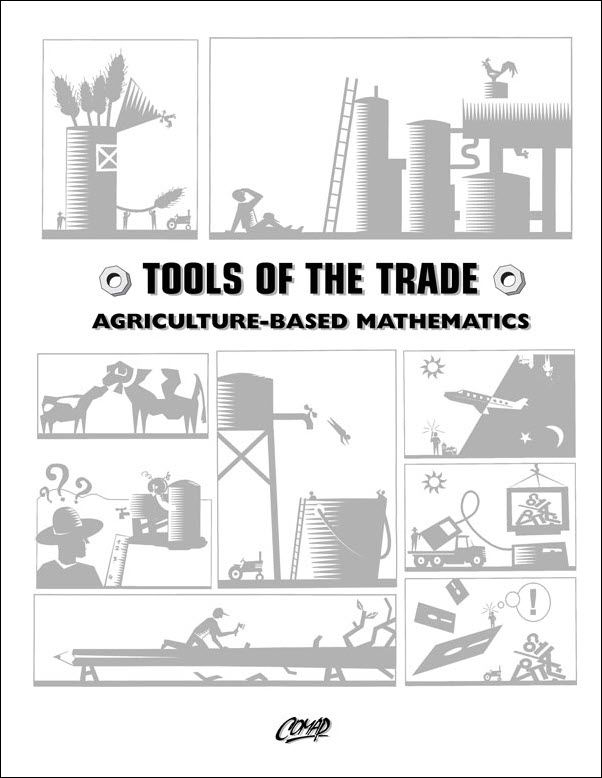Tools of the Trade: Unit 5: Negotiating the Maze
Author: Project Co-Directors: Dave Engelhard, Michael Kallaher & Jack Robertson
Unit 5: Negotiating the Maze: Purpose of Unit:
To provide a simple problem-solving activity; to introduce the concept of optimal decision making in a simple setting.
Note: The information below was created with the assistance of AI.
Level of Mathematics
Target Audience:
Suitable for late middle school to high school students (Grades 8–11).
Accessible to general education students, but enriched by those familiar with:
Arc length formulas
Basic trigonometry (e.g., Law of Cosines, properties of 30°–60°–90° triangles)
Mathematical Skills Involved:
Optimization and shortest path strategies
Arc length calculation using
𝑠 = 𝑟 𝜃 s=rθ
Triangle geometry, including special right triangles
Distance minimization in grid-based and circular path layouts
Elementary application of trigonometry and coordinate reasoning
Application Areas
Core Themes:
Optimization in movement and spatial navigation, particularly in agricultural and real-life rural settings.
Situational decision-making around:
Efficient movement of farm equipment
Urban planning and errand-running
Space navigation (e.g., stairwell and office routes)
Practical Applications:
Agricultural logistics: Navigating fields without damaging crops.
Rural town planning: Efficiently organizing errands across fixed points.
Facility layout planning: Optimizing route choices in buildings and fields.
Mathematical modeling of real-world scenarios, such as circular fields and block-based towns.
Prerequisites
Required Knowledge:
Basic geometry: Circles, radii, angles, and triangles.
Distance calculation: Linear and arc-based.
Trigonometry (for enriched exercises): Law of Cosines, properties of special triangles (especially 30°–60°–90°).
Familiarity with radians is beneficial for advanced parts.
Tools Used:
Visual reasoning from diagrams
Optional use of a calculator for arc length and trigonometric evaluations
Preparation Recommendation:
Exposure to earlier geometry units or lessons on angles, paths, and movement in coordinate systems would help students engage more confidently.
Subject Matter
Key Exercises and Themes:
Maze in a circular field – calculate shortest legal paths (avoiding dotted paths), evaluate and compare options.
Errand navigation – determine optimal parking location based on minimizing walking distances to three destinations in a city grid.
Angle-based route comparison – determine when traveling on an outer circular path is more efficient than an inner one, regardless of radii.
Assessment Problem – multi-floor building route optimization; how many routes and when do multiple optimal paths occur?
Mathematical Focus:
Spatial awareness and path minimization
Creative problem posing and visual logic
Interdisciplinary thinking connecting math, geography, and real-life navigation
Instructional Approach:
Highly visual and contextual, encouraging exploration.
Flexible for group work or individual discovery.
Encourages formulating extensions, e.g., what happens when more locations are added or constraints changed.
Correlation to Mathematics Standards
Common Core State Standards (CCSS) Alignment:
8.G.8: Apply the Pythagorean Theorem to find distances.
HS.G-C.A.1–2: Understand and apply properties of circles and arc lengths.
HS.G-SRT.5: Use trigonometric ratios and the Law of Cosines.
HS.F-IF.4: Interpret functions and their geometric representations in context.
HS.MG.A.1: Apply geometric concepts in modeling situations.
Mathematical Practices:
MP1: Make sense of problems and persevere in solving them.
MP4: Model with mathematics.
MP6: Attend to precision.
MP7: Look for and make use of structure.
NCTM Process Standards:
Connections: Bridging mathematics with everyday navigation and optimization problems.
Problem Solving: Rich tasks designed to invoke strategic thinking.
Representation: Interpreting and producing diagrams, paths, and geometry-based plans.

Mathematics Topics:
Application Areas:
Prerequisites:
You must have a Full Membership to download this resource.
If you're already a member, login here.